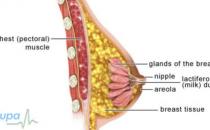Bone cancer

Cancer that starts in the bone is known as primary bone cancer. Primary bone cancer is very rare; about 500 people in the UK get it each year and is most common in teenagers and young adults. Primary bone cancer is usually treated with surgery, radiotherapy or chemotherapy.
How cancer develops
About bone cancer
Symptoms of bone cancer
Causes of bone cancer
Diagnosis of bone cancer
Treatment of bone cancer
Living with bone cancer
How cancer develops
The information on the video provided does not constitute advice on diagnosis or the treatment for heart disease and such advice should always be sought from a doctor or another suitably qualified health professional.
About bone cancer
There are around 200 bones in your body. These bones make up your skeleton – the rigid internal structure that supports your body. Bone is a living tissue. It’s made up of the mineral calcium and different types of cells. The cells continuously break down and form new bone.
Cancer is caused by an uncontrolled growth of cells. Primary bone cancer is cancer that starts in the bone. Secondary bone cancer is cancer that spreads to the bone from another organ. This factsheet is only about primary bone cancer.
Types of primary bone cancer
There are many types of primary bone cancer. The main ones are listed below.
- Osteosarcoma – this is the most common type of bone cancer and it affects about 150 people each year in the UK. It is most frequent in teenagers and young adults, but it can occur at any age. It usually develops in the lower thighs, shins or upper arms.
- Ewing’s sarcoma – this affects about 100 people each year in the UK and is most common in teenagers. It usually develops in the pelvis, thighs or shins but it can also occur in the soft tissues of the body.
- Chondrosarcoma – this affects about 80 people each year in the UK and is most common in adults over 40. It starts in the cartilage cells in joints. It usually develops in the bones of the thighs, pelvis, ribs, upper arm or shoulder blades.
- Spindle cell sarcoma – there are four types: undifferentiated sarcoma of the bone, malignant fibrous histiocytoma, fibrosarcoma and leiomyosarcoma. They all behave like osteosarcoma but are more common in adults over 40. This type of cancer usually develops in the lower thighs, shins, knees or arms.
Symptoms of bone cancer
Symptoms vary depending on where the bone cancer develops and how severe it is.
Bone cancer often causes pain and tenderness in the affected area. In children, this can be mistaken for growing pains, in adults it can be mistaken for arthritis. The pain is often worse at night. As the cancer grows it can also cause swelling in the affected area. If it is near a joint, it may make movement in the joint difficult.
Less common symptoms include:
- tiredness
- fever or night sweats
- weight loss
These symptoms aren’t always caused by bone cancer but if you have them, visit your GP.
Causes of bone cancer
Doctors don’t fully understand why bone cancer develops. However, certain factors make bone cancer more likely.
- Age – bone cancer is most common in teenagers and young adults, when bones are growing.
- Radiotherapy – past treatment with radiotherapy increases the risk of having bone cancer in that area.
- Chemotherapy – this depends on the type and dose of anti-cancer drugs used.
- Paget’s disease – this disease affects the bones, making them brittle and causing pain and fractures. About one in 10 people with Paget’s disease develop bone cancer.
- Past benign bone tumour – if you have had a benign (non-spreading) type of bone tumour, you’re more likely to develop chondrosarcoma.
- Genetics – having a rare inherited condition, such as Li-Fraumeni syndrome, retinoblastoma or Rothmund Thompson syndrome, makes you more likely to develop osteosarcoma.
Diagnosis of bone cancer
Your GP will ask about any symptoms and examine you. You may have the following tests to confirm diagnosis.
- Bone X-ray – this can be the simplest way of finding out which bones are affected.
-
Scans – these may include ultrasound, MRI or CT scans. These are done to check the bones, muscles, organs and tissues in your body. MRI and CT scans can show how much of the bone is affected.
-
Bone scans – this is more sensitive at checking for bone cancer than a simple X-ray. A small amount of harmless radioactive dye is injected into a vein. This collects in areas of the bone that may have cancer, and is picked up by the scan.
- Biopsy – a sample of cells or tissue is removed from the bone and sent to a laboratory for diagnosis. The procedure is called a core needle biopsy and is done under local anaesthesia. Sometimes doctors do an operation called a surgical or open biopsy under general anaesthesia.
Treatment of bone cancer
Treatment depends on the type of bone cancer, how far it has spread, your age and your general health. Your doctor will discuss your treatment options with you. There are three main treatments for bone cancer.
Surgery
The type of surgery you have depends on how far the cancer has spread. Surgery is sometimes followed by chemotherapy or radiotherapy treatment to make sure all the cancer cells are destroyed.
- Limb-sparing surgery – this involves removing the area of bone or joint affected by the cancer and replacing it with either a metal prosthesis (an artificial replacement part) or a piece of healthy bone taken from another part of your body (a bone graft). Advances in technology mean that limb-sparing surgery is becoming more common.
- Amputation of affected limb – if the cancer has spread into surrounding tissues and blood vessels, amputating the limb may be the only way to get rid of the cancer.
Non-surgical treatments
- Chemotherapy – anti-cancer drugs are used to destroy cancer cells. They are usually injected into a vein but sometimes you may be given tablets. It’s effective for some types of osteosarcoma and Ewing’s sarcoma. Chemotherapy is often given before surgery to shrink the cancer to make it easier to remove.
- Radiotherapy – radiation is used to kill cancer cells. Radiotherapy is especially useful if the cancer is in a difficult area to operate on.
Living with bone cancer
After treatment for bone cancer, you will have regular check ups with your doctor to see if there is any evidence of the cancer returning. If the cancer has already spread, you will be seen regularly by doctors or specialist nurses for treatments to deal with any symptoms.
Being diagnosed with cancer can be distressing for you and your family. Specialist cancer doctors and nurses are experts in providing the care and support you need. There are support groups where you can meet people who may have similar experiences to you. Ask your doctor for advice.
How is limb-sparing surgery going to affect me in my day-to-day life?
What will life be like after an amputation?
Will I still need to see my doctor after my treatment finishes?
How is limb-sparing surgery going to affect me in my day-to-day life?
Surgery usually works well and many people recover almost full use of their limb. Rehabilitation can help you to make as full a recovery as possible though there may be some issues, such as limited movement, which may affect your day-to-day life.
Explanation
Around eight out of 10 people who have bone cancer in an arm or a leg have limb-sparing surgery to remove the cancer from the bone.
You will need lots of physiotherapy to help get back as much power and flexibility in your arm or leg as possible. An occupational therapist can also help you become independent.
Certain issues may affect your life.
- You may have a slight limp if you had surgery to your leg. Trying to compensate for the limp can sometimes cause pain in other areas. Speak to your doctor if this happens.
- You may need further surgery in the future to replace loosened or worn artificial joints.
- If you are treated in childhood, you may need operations to extend (lengthen) the bone as your body grows. Some artificial bones are designed to expand and can be lengthened using a strong magnet without an operation.
- You may not be able to take part in contact sports like football as it may damage or loosen the artificial bone or joint.
- If you had your shoulder joint replaced, you may not be able to lift your arm above your shoulder.
- You will have surgical scars and you may feel self-conscious. You may want to talk to your family or a counsellor about your feelings.
- Rarely, surgery and radiotherapy can cause a build up of fluid causing swelling in your arm or leg (lymphoedema). This can be well controlled if treated early.
What will life be like after an amputation?
Amputation of a limb is a major life change and affects people in different ways. Many go onto lead full and active lives and are able to work, drive and play sport.
Explanation
Life after amputation is different for everyone. The kind of amputation you have and how much of your limb is removed will affect your recovery and how much you are able to do.
Recovery from amputation isn’t easy and you will need to be committed and determined. A team of health professionals will help you make as full a recovery as possible.
A few days after your operation, the physiotherapist will start to help you to strengthen the muscles around the site of your operation. Once your wound has healed, you can be measured for your artificial limb. Your limb will be made specifically for you to make sure it fits as well as possible. New technology and materials now mean that artificial limbs are very effective.
Rehabilitation can be frustrating. You may need to learn how to walk and balance again or how to write, eat and get dressed. An occupational therapist can help make changes to your home and workplace. He or she can also give you aids to make life easier.
It commonly takes about a year for you to get back to your usual lifestyle and to wear your artificial limb regularly.
Problems can include the following.
- Phantom limb pain – about six in 10 people who have a leg or arm amputated will have phantom limb pain at some time (pain in the amputated arm or leg). This feeling usually disappears gradually over a few months. Massage, elevating the existing limb, rest and distraction can all help to reduce phantom limb pain. Your doctor may prescribe painkillers or mild antidepressants to relieve phantom limb pain. Always ask your doctor for advice and read the patient information leaflet that comes with your medicine.
- Feelings of anger, frustration or shock. It can be difficult to deal with the change in the way you look. Support groups and talking to your family, friends and health professionals can help overcome these feelings.
Will I still need to see my doctor after my treatment finishes?
You will need to visit your doctor regularly after your treatment finishes to check for any signs that the cancer has come back or spread, and to see how well you are recovering. It’s important to go to your appointments to make sure you have the best chance of getting early treatment and making a good recovery if the cancer returns.
Explanation
After you have finished your treatment, you will have follow-up appointments with your doctor. How often these are depends on your individual circumstances. For the first two years after your treatment finishes, you will probably see your doctor every three months. If everything goes well, these appointments will then be less frequent – every six months and then once a year. The gaps between your appointments get longer as time goes on because the chance of the cancer coming back gets less as time passes. If you notice any new symptoms or you are worried that the cancer has come back in between these appointments, arrange to see your doctor straight away.
You will have regular follow-up appointments with your doctor for several reasons.
- To spot any early signs that the cancer has come back – this means you can have any further treatment quickly so you have the best chance of a good recovery.
- To check for any complications of your treatment and see how you are progressing.
- To give you an opportunity to ask questions or talk about your worries.
At every appointment, your doctor will examine you. He or she may also ask you to have blood tests and X-rays, including chest X-rays. This is because some types of cancer can spread to the lungs. If the cancer does spread to your lungs, it can be successfully treated if it’s spotted early.
For many people with bone cancer, treatment is very successful. However, for some people, the cancer does come back or spread to other areas, which is why follow-up appointments are so important.
Further information
-
Sarcoma UK
www.sarcoma-uk.org -
Cancer Help UK
0808 800 4040
www.cancerhelp.org.uk -
Macmillan Cancer Support
0808 808 0000
www.macmillan.org.uk
Sources
- Bone cancer. Cancer Research UK. www.cancerhelp.org.uk, accessed 4 February 2010
- Types of primary bone cancer. Macmillan Cancer Support. www.macmillan.org.uk, accessed 4 February 2010
- What is bone cancer? American Cancer Society. www.cancer.org, accessed 4 February 2010
- Paget’s Disease – the facts. The Paget’s Association.www.paget.org.uk, accessed 4 February 2010
- Improving outcomes for people with sarcoma – the manual. National Institute of Health and Clinical Excellence (NICE), March 2006. www.nice.org.uk
Related topics
- Cancer staging and grading
- Chemotherapy
- CT scan
- Eye cancer
- MRI scan
- Radiotherapy
- X-ray
















